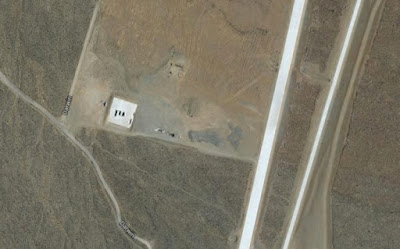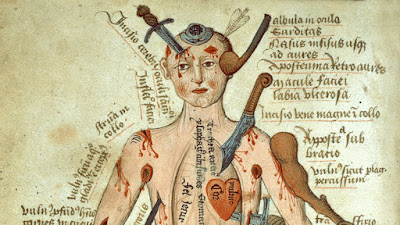Wednesday, March 31, 2021
Tuesday, March 30, 2021
I think that everyone struggles with some sort of fear of something in their life. Some fear spiders while other fear failure. But when does it cross over to the extremely bizarre phobia category? Well let’s take a look…
1. Automatonophobia
Automatonophobia is when someone is afraid on Ventriloquist’s Dummies.
Being afraid of anything that falsely represents a human. This could include animatronic creatures, mannequins, wax statues and yes even ventriloquist dummies. Everyone that struggles with this phobia experiences it a little differently.
Right now the cause of Automatonophobia is unknown. There has been suggestions that maybe the fear stems from society having certain standards about how one should be, but that is all speculations.
2. Cathisophobia
Cathisophobia is when someone is afraid of sitting down.
 |
| source-Vidhi pipara |
Cathisophobia is the fear of sitting down and is also know as Thaasophobia. It is suggested that they may have anxiety of being trapped in some way or not being able to sit still.
Also this phobia may stem from the anxiety of being in pain when sitting down and is common in the elderly or they may also be forced to sit for long periods of time. Younger people are more in fear of being trapped.
Most people who suffer from this phobia will do anything they can to avoid sitting. As you know sitting is a huge part of our life and could potentially cause a lot of problems in someones life.
3. Arachibutyrophobia
Yes… The fear of getting peanut butter stuck to the roof of your mouth.
4. Eisoptrophobia
Eisoptrophobia is the fear of looking in the mirror.
5. Mageirocophobia
Mageirocophobia is when someone is afraid of cooking.
 |
| source-Verywell mind |
Most people that are afraid of cooking stems from the fear of things not turning out the way that they should. They may also have the fear of causing some kind of illness. Some people are even afraid that they may serve inedible food.
People have learned how to cope with this phobia by staying away from certain elements that cause them to become nervous. Some however have it so severe that it could be life limiting.
The story of humanity is our journey of understanding the world that we live in. Even today, historians and scientists work towards answering questions related to the universe and the past of humanity.
Here are 10 stories of success that have explained previously unsolved mysteries.
1. The Lost Franklin Expedition Ship
British explorer Sir John Franklin set off towards the Canadian Artic to search for the Northwest Passage in 1845. This voyage was well funded and equipped, and attracted a lot of attention from the media. However, after entering the Artic, it was never heard from again. 2 ships with 129 men simply disappeared.
Over the years, there have been a few clues to explain the fate of this expedition. In 1959, a rescue mission found 2 notes under a rock on King William Island. The first note explained how the ship got trapped in ice and so the crew decided to spend the winter on the island. The second note happened to be scribbled on the margins of the first note informed us that the ship had been trapped for over a year and the crew was displaying a high rate of mortality. Franklin was dead and whoever survived planned on walking south to safety. However, they did not make it. Bones found by Inuit hunters displayed marks of metal saws throwing light on the fact that the men were eating each other.
In 1880 when the area came under Canadian control, London stopped all attempts at their search operations. However, the Canadian’s still tried to find the missing ships. In 2014, Prime Minister Stephen Harper announced the discovery of one of the ships by an underwater vehicle belonging to Parks Canada. They believe this wreck will throw light on the fate of the expedition and the high death rate of Franklin and his crew. The other ship still hasn’t been found, but there is no doubt it will be found in the recent future.
2. Egypt’s Strangely Small War Elephants
The Pharaoh Ptolemy IV of Egypt declared war against the Seleucid ruler Antiochus III in 217 B.C. The armies met at the Battle of Raphia (not Gaza) in July that year. War elephants were the deadly weapon used by both sides. The famous Greek historian Polybius described how the elephants locked tusks and ran at each other in this fight. According to this account of the fight, only a few of Ptolemy’s elephants were actually a part of this battle. They started to panic at the sight of Antiochus’s larger Indian elephants.
Eritrean elephants are close to extinction today. However, studying their population has thrown light on the fact that they are savanna elephants and are in fact much larger than the Indian elephants. Polybius was not present at the battle and hence would have heard legends about the size of wildlife in India which made him come to the conclusion that Antiochus’s elephants managed to scare off the African elephants. However, in reality, though the African elephants might have been larger in size they are extremely skittish and difficult to keep under control. This didn’t matter much since Ptolemy won the battle anyway.
3. The Dark Side Of The Moon
The first pictures of the dark side of the moon were taken in 1959 by the Soviet spacecraft Luna 3. However, to the surprise of everyone, the unseen surface of the Moon contained almost none of the dark areas that are known as lunar maria that take over a large part of the familiar side of the Moon. Only 2% of the dark side of the Moon was made up of lunar maria.
Maris is large basaltic plains that are formed due to volcanic activity. It was concluded that a thicker crust could have prevented this from happening on the dark side. However, the mystery as to why the other side is darker still remained unanswered for over 50 years until Jason Wright – an astrophysicist claimed to have cracked the case.A theory exists which states the Moon was formed from the debris that scattered when there was a collision between the Earth and a large object the size of Mars. This collision would have generated a large amount of heat and since the Moon is so much smaller than the Earth, the Moon cooled off faster. However, the side of the Moon that faces the Earth still continued to get heat from the molten planet. The faster cooling on the dark side of the moon could have created this thicker crust.
4. The Mysterious Notes In A Copy Of Homer’s ‘Odyssey’
Scientists were left puzzled over notes found in an ancient copy of Homer’s “Odyssey” for over 150 years. There were handwritten text all over the margins of this 500-year-old book. However, they had not been able to decode the text and understand what exactly it said. However, a collector M.C Lang offered a $1,000 reward to anyone who could decode the text.
The prize was finally won by 2 Italians – Daniele Metilli and Guila Accetta who found these notes were made in a shorthand form which was invented by Jean Coulon de Thevenot in the 18th century. Once they decoded the text, they discovered it was in French and was actually a translation of the “Odyssey”.
This discovery took a great deal of work on the parts of Metilli and Accetta who researched several defunct stenographic systems until they found something that resembled the annotations. They said they could never have been able to do it without the resources of the Internet.
5. The Ocean Quack
Around 50 years ago, sounds were detected by submarines through the Southern Ocean. These sounds resembled those of a duck quacking however that was impossible since ducks don’t venture into the middle of the sea.
Several other reports came up over the years that reported the same quacking sounds. Some theories said these sounds were caused by ships, others put it on shoals of fish. The only concrete thing about these sounds was the fact that they were reported in the Southern Ocean only during winter and spring.
Researchers finally discovered the source of this sound only earlier this year. They were reported to come from Antarctic minke whales. This came about when acoustic recorders were attached to a pair of minke whales which resulted in a close-up recording of this “quack”.
This discovery will now help scientists study the migration times and patterns of these whales by monitoring the “quack” and will be facilitated by a permanent acoustic recording station in Antarctica.
6. The Last Resting Place of U-26
Shortly after the start of World War I in 1914, Lieutenant Commander Egewolf von Berckheim was appointed the captain of a newly built German submarine U-26. His skills and effective captaincy helped him sink 4 enemy ships including the Russian Pallada.
In 1915, the submarined disappeared in the Baltic sea taking with it 30 of the crew members. There have been several theories over the years that explained this disappearance. Some claimed it was destroyed by a mine while others said there was something wrong with the engine. However, no wreck could be found.
In 2014, the U-26 remains were finally found in the western Gulf of Finland. This area was heavily mined by the Russians during the war in order to keep the Germans away. It is believed that this minefield is what destroyed the U-26.
Ironically enough, the remains of Pallada were also found along with the U-26. Coincidentally, these remains were found almost exactly 100 years after the commissions of the first submarine in 1914.
7. Chile’s Ancient Whale Graveyard
 |
| source-National Geographic |
During the expansion of the Pan-American Highway 4 years ago, a large “whale graveyard” was discovered in the Atacama Desert. Under layers of rock lay huge fossils which mystified palaeontologists regarding why so many species (nearly 40) of animals met their doom in the same place. The roadwork was then put to a temporary stop in order to allow further investigation.
3D imaging experts from the Smithsonian came up with a possible answer. Their investigation showed the death of these marine mammals happened at 4 different times over a period of 20,000 years, before they were washed out to the tidal flat and covered with layers of sand. It is believed that the cause of death of these whales was toxic algal blooms which still happen in Chilean waters. Some of these fossils also show small apatite grains which are likely the remains of the deadly algae.
8. The Lost son
In 2013, a group of workers from a logging company happened to come across the remains of the plane and the four airmen while working on Vancouver Island. Unfavourable conditions led to the remains being collected and identified only in May 2014. The four men were then buried at a Commonwealth war cemetery.
9. The Identity Of The Bosham Head
 |
| source-Daily mail |
Previously, it was thought impossible to identify the origin of the head simply because of its extremely weathered condition. However, modern laser technology helped scientists identify the different facial features and ever the hairstyle which all pointed towards Trajan.
It is believed that the statue was erected to greet visitors as they entered Chichester’s harbour – the gateway to England. There is a similar statue on display at the Ostia Harbour in Rome.
10. The Location Of The Santa Maria
In 1984, history was made when underwater archaeologist Barry Clifford discovered the wreck of Whydah – the only fully confirmed pirate shipwreck. However, in 2014 Clifford has claimed to have found the wreck of the Santa Maria – Columbus’s flagship that sunk on Christmas Eve 1492.
During his research in Haiti, Clifford pinpointed the location of a fort that Columbus built after the wreck of the Santa Maria. Using this location and the content in Columbus’s diaries he found a likely site of the wreck. To his surprise, Clifford discovered he had photographed this wreck with his team years ago! Several dives organised in 2014 confirmed the size of the ship was the same as that of the Santa Maria and they even found a cannon consistent with the guns that were reported to have been carried by Columbus. This happens to be one of the most amazing archeological finds in recent history.
I think that everyone at some time has used Google Maps to find a place they have never been to or -even for step-by-step directions to get somewhere. But there are some secrets that even the experts can’t explain. Some of which are blurred out or blacked out areas in the maps and in very unusual areas of interest. Check this out:
1. Junction Ranch, CA
 |
| source-Viralnova |
2. Sandy Island
Discovered by Captian Hook in the late 1700’s this Island that has been on maps for 200 years is mysteriously blacked out on Google Maps. I wonder what’s going on with this place?
3. Thule Air Base, Greenland
During the time of the Cold War the United States had B-52 bombers carrying nuclear weapons on a regular basis. Unfortunately one of the planes had an accident and it was said that the nuclear bomb released a significant amount of radiation. On Google Maps this area is blurred out.
4. Kangtega, Nepal
5. Siberia, Russia
This is an area in Northern Russia that is obviously copied and pasted. Not sure what Russia has got going on in this area but they sure don’t want any of us finding out.
Parasites live all over our world and we come in contact with them a lot more than we actually think! It could be as simple as drinking contaminated water or eating a fresh-water vegetable and you become contaminated with a parasite! I know it sounds kind of gross but this is real life stuff and it may be in you right now! Check it out:
1. Loa Loa
This parasite can enter your body through any opening and then end up coming out of your eye.
2. Scabies
These are highly contagious bugs that make you break out in crazy rashes.
3. Roundworm
These parasites infect as many as 1.5 billion people and responsible for 60,000 deaths per year.
4. Guinea Worm
You can get these nasty worms by drinking contaminated water. They will then literally crawl out of your skin.
5. Human Botfly
These parasites live in your skin, mouth and eyes.
6. Tapeworm
With no signs or symptoms, these worms can live in the host for up to 30 years.
7. Hookworm
These parasites live in your intestines and suck your blood.
8. Pinworm
These worms lay eggs on your anus and use you to infect other people.
9. Whipworm
Painful passage of stool, diarrhea, and rectal prolapse.
10. Blood-Flukes
They journey into your bloodstream and lay eggs that spread to your liver, bladder, lungs and intestines.
In older days, people were not as kind to those who were patients in an insane asylum and they were often tortured or mistreated. People believed that the insane were mostly a burden that needed to be dealt with instead of a person who simply lives a different sort of live which requires kind accommodations.
Take a look at these techniques used to keep these patients under control. They were often painful and cruel.
1. Electroconvulsive Therapy
Otherwise known as electroshock, this form of treatment was the process of retraining the mental patient in order to send hundreds of volts of electricity through their brain. Many of the patients suffered from extreme memory loss afterwards.
2. Trepanning
This ancient practice goes as far back as prehistoric times. In this method, holes were drilled into the patients’ skull to release the evil that was believed to be inside of them.
3. Hydrotherapy
In the late 1800’s and early 1900’s, hydrotherapy took place by strapping patients inside a bathtub or alternatively, wrapping them tightly with cloths and then subjecting them to violent jets of water in order to sedate them.
4. Insulin Shock Therapy
Doctor Manfred Sakel created a method of inducing comas in the early 1920’s. Mental patients were injected with insulin in order to cause them to slip into a coma. According to this doctor, they would emerge from their coma cured.5. Lobotomy
 |
| image credit-BBC |
6. Sterilization
Julius Wagner-Jauregg, an Austrian physician sometimes sterilized patients who engaged in excessive masturbation because he believed that they had developed schizophrenia.
7. Malaria Injections
8. Organ Removal
 |
| image source-Gizmodo |
9. Restraint In Utica Cribs
 |
| source-mn.gov |
An unruly patient might have been restrained in one of these. They remained in this tiny coffee until they were sedated.
10. Sleep Deprivation
This was believed to help in the treatment of depression.
















































